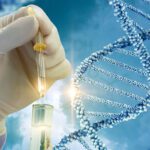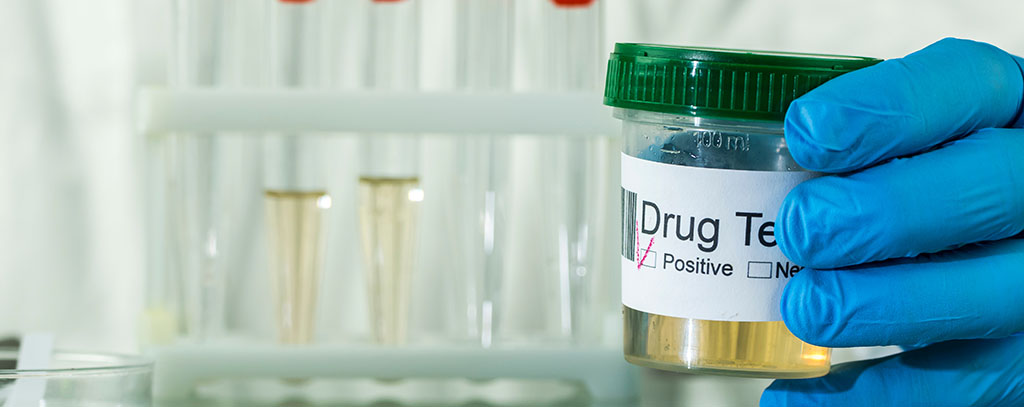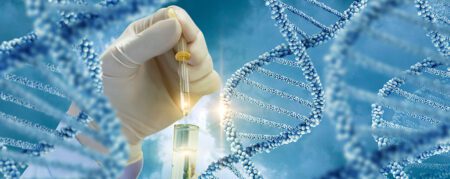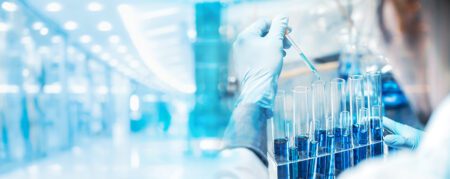
Drug Testing in Schools: A Guide to Effective Implementation
October 5, 2023
Your Guide to Workplace Drug Testing Policies
October 6, 2023Ever held a winning lottery ticket? Picture it. The anticipation, the pulse-pounding thrill of knowing you might be onto something big... that's how an employer feels when they've found what seems to be the perfect candidate.
But wait...
What if there's more than meets the eye? You wouldn't want your star player sidelined by unforeseen issues, would you?
This is where drug test cups come in handy – simple yet effective tools for keeping workplaces safe and productive. From understanding these tests to interpreting results and handling non-negative outcomes - this post covers it all!
We're even diving into legal considerations around testing! Let's begin our exploration into the world of testing! Are you ready?
Table of contents
- Understanding Drug Test Cups
- The Importance of Drug Testing in the Workplace
- Types of Drugs Detected by Test Cups
- Reading Drug Test Cup Results
- Confirmatory Tests for Non-Negative Results
- Responding to Positive Drug Test Results
- Implementing a Drug-Free Workplace Policy
- Limitations and Legal Considerations of Drug Testing
- FAQs in Relation to Interpreting Drug Test Cup Results: What Employers Need to Know
- Conclusion
Understanding Drug Test Cups
Drug test cups are a simple, practical tool used by employers to check for substance use. They work on the principle of immunoassay testing, which is both quick and reliable.
The drug test cup itself is a compact unit with an integrated sample collection area and results panel. It's as easy to use as pouring in the urine sample and waiting for the lines to appear. A line next to each listed substance indicates whether or not that specific drug has been detected.
You might ask why these cups have gained popularity among employers? Well, their convenience factor can't be understated. Not only do they provide results quickly - often within five minutes - but they also eliminate the need for separate handling of urine samples since everything happens within one closed system.
The Science Behind Drug Test Cups
Immunoassay testing, utilized by drug test cups, identifies drugs based on their chemical structure. When you pour a urine sample into the cup, it interacts with antibodies designed specifically to react with certain substances.
If there's no reaction (no line appears), then that particular substance was found in the urine sample – this would mean 'positive' result despite sounding counter-intuitive at first. If there’s any confusion about interpreting results though don’t worry: most kits come equipped with detailed instructions just for this purpose.
Picking The Right Cup For Your Needs
Cups vary widely when it comes down what substances they're able detect – some may look out only common drugs like marijuana cocaine while others cover wider spectrum including prescription medications even alcohol.
So, choosing the right cup depends on your specific needs. Are you more concerned about illicit drugs or prescription abuse? Do you need results immediately or can they wait? The answers to these questions will guide your choice.
The Importance of Drug Testing in the Workplace
Drug testing is a key tool for maintaining a safe, productive work environment. Ensuring a safe and productive work environment for your team is paramount.
According to SAMHSA, regular drug testing helps reduce accidents and boosts overall productivity. But that's only scratching the surface.
Enhancing Safety at Work
A workplace free from drugs means fewer safety risks. An impaired employee could be dangerous—they might cause an accident or harm others. With drug tests, you make sure this doesn't happen.
In industries like transportation or construction where alertness is crucial, this becomes even more vital. Regularly checking for substance use can save lives and prevent serious injuries on site.
Promoting Employee Health & Well-being
Drug-free policies don’t just keep everyone safe—they also promote healthier lifestyles among employees. Workers are less likely to misuse substances if they know they'll be tested regularly.
This approach encourages workers to seek help if they're struggling with addiction issues—a win-win situation.
Maintaining Productivity Levels
Studies have shown
that employees who use drugs are less productive than those who don't—resulting in lower quality work and more mistakes.
With consistent drug testing in place, you ensure all staff members stay focused on delivering top-notch performance.
So while it may seem daunting initially implementing these checks brings immense benefits: better safety standards, improved worker health and higher productivity levels.
Types of Drugs Detected by Test Cups
Drug test cups are remarkable tools that can detect a wide range of substances. Let's explore the types they typically identify.
Marijuana (THC)
Drug testing cups can quickly detect evidence of recent consumption of marijuana, a widely used illegal drug containing the active component THC. Drug test cups can easily pick up traces from recent use.
Cocaine (COC)
A powerful stimulant and party drug, cocaine, shows up on these tests as well. Even casual use leaves markers that these cups can find.
Opiates (OPI)
The opioid crisis has brought more attention to this category. From prescription meds like morphine or codeine to street drugs like heroin, opiate detection is crucial in many scenarios.
Amphetamines (AMP) and Methamphetamines (MET)
Amphetamines and methamphetamines, both potent stimulants with high abuse potential, also fall under the radar of drug test cup screenings.
Benzodiazepines (BZO)
Benzodiazepines are often prescribed for anxiety or sleep disorders but carry risk for dependency and misuse. Hence their inclusion in standard panel tests makes sense.
Please note: different brands may have varying panels covering additional substances beyond what we've mentioned here.
Remember though – no single tool gives an exhaustive picture of a person's substance use. It's critical to take into account these findings as part of a more extensive evaluation and not the ultimate determination.
Drug test cups are an excellent first step in identifying potential drug use, but they should be complemented by other methods for more comprehensive screening. These may include lab confirmations or professional consultations.
Reading Drug Test Cup Results
To accurately read drug test cup results, you first need to understand the color-coded strips on the side of the cup. Each strip corresponds to a specific type of drug.
A negative result is shown when two lines appear in both control (C) and test (T) regions for each strip. But remember, even if one line appears fainter than another, it's still considered negative.
On the flip side, a positive result shows only one line in the control region with no line appearing in the test region.
The 'Invalid' Result
An invalid result occurs when there are no visible lines at all or there's just one line but it's found within the T area without any appearance within C area. In these cases, retesting with a new sample is needed.
Sometimes people get confused between invalid and non-negative results which can lead to mistakes during interpretation so clarity here will help avoid misunderstandings.
False Positives & False Negatives
Beware. Some OTC meds or dietary supplements may cause inaccurate readings, due to containing elements similar to those picked up by drug tests. According to a Mayo Clinic Proceedings report, false positives can occur.
Likewise, instances of false negatives do occur where someone has taken drugs but their levels aren't high enough for detection yet - typically this happens soon after ingestion before metabolites have had time build up sufficiently in urine samples.
Timeframe For Reading The Results
Reading the results should be done promptly, within five to ten minutes of conducting the test. It's best to read them within five to ten minutes after the test has been conducted.
Waiting too long might cause evaporation lines that can confuse you into thinking they are actual positive or negative lines, which leads to incorrect interpretation of results.
Maintaining Confidentiality
The process must respect employee privacy rights as per U.S Department of Labor guidelines. This includes conducting tests in a private setting and keeping all records confidential unless there's specific consent from an individual for disclosure.
Confirmatory Tests for Non-Negative Results
When a drug test cup indicates non-negative results, it's crucial not to jump to conclusions. These preliminary findings are just that—preliminary—and they need confirmation through more specific testing methods.
A Substance Abuse and Mental Health Services Administration (SAMHSA)-approved lab typically conducts these confirmatory tests. Techniques such as GC/MS and HPLC are employed to guarantee the precision of results. This helps ensure the accuracy of results.
The Process of Confirmatory Testing
To start with, labs will take the original sample used in the initial screening. They then apply advanced scientific techniques that let them identify individual substances within the specimen.
The most commonly used method is GC/MS because it can break down complex mixtures into their basic elements and measure each one accurately. HPLC might be applied if there's a need for additional verification due to its high sensitivity and precision in detecting drugs at low concentrations.
Misconceptions about Non-Negative Drug Test Cup Results
It's important not to confuse non-negative with positive right off the bat. A non-negative result simply means something was detected but needs further analysis to determine exactly what it is – this could be anything from illegal substances, prescribed medication or even certain food items causing an unusual reaction on the test strip.
Action Steps Following Non-Negative Findings
- Contacting your Medical Review Officer should be your first move when you get non-negative results. Their role includes reviewing all tests before reporting the results to employers.
- Informing the employee in question privately and confidentially about their non-negative result is also a crucial step. They should be given an opportunity to provide any relevant information that might affect the test, such as prescription medications they're currently taking.
Don't forget, confirmatory tests are crucial to have all the facts on hand before you make big decisions that could greatly affect your team.
Responding to Positive Drug Test Results
When an employee has a positive outcome on a drug test, it is essential that employers approach the circumstance with caution. The first step is always to confirm the result.
Confirmatory Tests for Non-Negative Results
If a drug test cup indicates a non-negative result, you should send the sample off for lab testing. This confirmatory test, usually done via gas chromatography-mass spectrometry (GC-MS), can help eliminate false positives and provide more definitive results.
The Employee's Rights
You must respect your employees' rights throughout this process. Employees should be informed of their test results, and they may dispute them if procedural discrepancies are suspected.
In some cases, medical conditions or prescribed medications could cause positive results. Therefore, discussing these circumstances privately might be necessary.
Possible Actions After Confirmation
A confirmed positive drug test requires action, but remember, every case is unique, so tailor your response accordingly. Note: Your company’s policy should guide any disciplinary actions taken as well as support programs offered where appropriate.
- Suspension: A temporary leave from work while further investigation occurs or until certain requirements are met can be considered in severe cases.
- Treatment Programs: Offering assistance such as counseling or rehabilitation services shows empathy towards affected individuals and encourages recovery.
- Demotion/Reassignment: In safety-critical roles where drug use poses significant risks, this measure ensures everyone's safety without terminating employment outright.
When carrying out these measures, always stick to legal regulations; if uncertain, consult with a lawyer. Be fair, consistent, and remember - the goal is a safe and drug-free workplace.
Implementing a Drug-Free Workplace Policy
Preserving an environment without drugs is critical for security and efficiency. But, how do you go about it? The process involves three key steps: education, prevention, and treatment options.
Education is the Foundation
The first step in creating an effective policy is to educate employees about the dangers of drug use. This not only deters substance abuse but also creates awareness about its impact on job performance.
A good place to start with this initiative would be offering drug-free training programs. These help staff understand why your company insists on maintaining a sober environment.
Prevention Measures are Crucial
The next phase includes implementing preventative measures like random drug testing using reliable supplies from reputable sources such as Halux Diagnostic. It’s one thing to have rules against drugs at work; enforcing them consistently adds more weightage.
Regular screenings deter workers from abusing substances due to fear of detection. They'll think twice before risking their livelihoods knowing that tests can happen anytime.
Treatment Options Should Be Available
If an employee does test positive, what's next? Instead of immediate termination consider offering support through professional counseling or rehab programs if appropriate.
You could refer affected individuals to resources like the Substance Abuse Treatment Locator. This shows empathy and could motivate them to seek help, returning as productive team members.
Remember, a comprehensive drug-free workplace policy isn't just about catching offenders. It's more importantly about preventing substance abuse in the first place and supporting those who need help overcoming it.
Limitations and Legal Considerations of Drug Testing
While drug test cups are a practical tool for workplace testing, they do have some limitations. For one, they only detect recent use of substances—typically within the past few days. Also, false positives can occur due to certain medications or foods.
The legal landscape around workplace drug testing is complex and varies by state. Employers must respect employee privacy rights while also ensuring a safe work environment. The Society for Human Resource Management (SHRM) offers detailed guidelines on this balance.
Potential Pitfalls with Test Cups
No single type of test can cover all possible drugs an individual might consume; each has its unique set of detectable substances.
A more nuanced issue arises when considering the detection window—the time frame in which a substance remains traceable after consumption—which varies depending on both the substance used and the individual's metabolism rate.
Navigating Legal Waters: State Laws & ADA Compliance
Laws governing workplace drug testing differ across states so employers need to familiarize themselves with local legislation before implementing any policies. It's vital not just for compliance but also helps protect companies from potential lawsuits related to invasion of privacy or discrimination claims.
Federal laws such as the Americans with Disabilities Act (ADA), however, prohibit employers from discriminating against employees who are taking prescribed medication that could result in positive test results. Understanding these laws can help employers create fair and legal testing policies.
Professional Help for Legal Compliance
To navigate this complex landscape, many companies turn to professionals in human resources or law who specialize in drug-free workplace programs. These experts ensure the company's policy adheres to all relevant federal and state laws while also considering employee rights.
The importance of professional advice cannot be overstated when it comes to developing a comprehensive, compliant, and effective drug-free workplace program that respects both employer needs and employee rights.
FAQs in Relation to Interpreting Drug Test Cup Results: What Employers Need to Know
What do employers look for in a urine drug test?
Employers usually check for drugs like marijuana, cocaine, opioids, methamphetamines, and alcohol. But the specific substances they screen can vary.
How accurate is Identify Drug Test Cups?
The accuracy of Identify Drug Test Cups typically hovers around 99%. However, factors such as improper use or storage can affect this rate.
How do I know if I passed my Escreen drug test?
You'll likely hear from your employer. If you don't get any news within a week or so after testing, it generally means you've passed.
Will 2 liters of water dilute urine?
Pounding down too much water before a pee test may dilute your sample. But remember: labs often detect over-dilution and might ask for another sample.
Conclusion
So, we've navigated the world of drug test cups together. It's been quite a journey!
We learned how these handy tools function and why they're essential for maintaining a safe workplace.
We discovered the range of drugs that can be detected, along with practical steps for interpreting drug test cup results.
If you find non-negative outcomes, now you know what to do next. You also understand how to respond when an employee tests positive for drugs.
You even got some insights into implementing a solid drug-free policy in your workspace! Plus, you're aware of legal considerations around testing – something every employer should have on their radar!
All this information helps in Interpreting Drug Test Cup Results: What Employers Need to Know. So use it wisely and build your dream team confidently!
For more details: Check Halux Diagnostics





